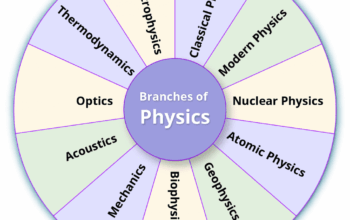The annals of history are often wrought with enigmas, some of which linger for decades, even centuries, teasing scholars and enthusiasts alike. One such profound mystery, steeped in heroism and sacrifice, has recently found illumination through the prism of modern physics. The story of Cher Ami, a remarkable messenger pigeon, serves not only as an evocative tale of survival but also as a testament to the relevance of physical science in elucidating historical events. This article explores the intersection of physics and history, culminating in the unraveling of a century-old mystery.
The backdrop of this narrative unfolds during World War I, a cataclysmic event that transformed not only geopolitical landscapes but also the very discourse on warfare. Amidst the chaos of the Meuse-Argonne Offensive in 1918, Cher Ami became emblematic of resilience. Deployed by the U.S. Army Signal Corps, this diminutive avian was entrusted with a monumental task—to deliver vital messages across perilous terrains. The stakes were extraordinarily high, as lives teetered on the knife’s edge of fate, governed by the unpredictability of war.
In the midst of this treachery, Cher Ami executed a remarkable mission, delivering a crucial message despite having sustained grievous injuries. This act of courage saved an estimated 194 men from the “Lost Battalion,” a group of American soldiers caught behind enemy lines. The narrative arc of Cher Ami’s journey, however, did not come to a close with the successful delivery of that life-saving message. His subsequent disappearance and eventual emergence as a war hero fostered numerous speculations about the physiological and psychological phenomena that underpinned his astonishing feat.
This brings us to the physiological implications of avian navigation and endurance. Pigeons, particularly homing varieties, possess an extraordinary capability of spatial awareness and navigation, often attributed to their sophisticated cognitive mapping abilities. The science of avian navigation has drawn scholarly attention, as studies disclose that these birds utilize various mechanisms—such as visual landmarks, magnetic fields, and even olfactory cues—to orient themselves. The intricacies of these processes, though seemingly straightforward, embody the rich tapestry of biological and environmental interactions.
Enter the realm of physics; a discipline that sheds light on the mechanics of flight and the forces that acting upon Cher Ami as he journeyed through tumultuous skies. The principles of aerodynamics, particularly Bernoulli’s principle and Newton’s laws of motion, play a pivotal role in understanding how such a small creature could traverse extensive distances in the face of dire circumstances. The delicate balance between lift and drag, and the influence of gravity, form the bedrock of a pigeon’s flight dynamics. As Cher Ami soared against the backdrop of war, these fundamental forces sculpted his path.
Furthermore, the exploration into Cher Ami’s flight velocity and the respective distances traveled allows for an engaging mathematical precedent. By applying basic kinematic equations, one may model his flight trajectory utilizing variables such as initial velocity, angle of ascent, and external factors including wind resistance. The vectorial representation of Cher Ami’s flight not only illustrates the physical strain endured during that fateful mission but also approximates the speeds he would have needed to maintain in order to successfully relay his life-saving message under the duress of war.
The convergence of physics with historical inquiry manifests here as a means of producing a more nuanced understanding of the events surrounding Cher Ami. Analyzing human etiology alongside the physical properties of avian species provides invaluable insights into how extraordinary feats arise from a confluence of courage, biology, and the physical universe. Such interdisciplinary studies highlight the profound ways in which physics informs historical narratives, revealing how natural laws govern even the most extraordinary acts of heroism.
Moreover, the story of Cher Ami serves as an intriguing metaphor for resilience itself. It raises poignant questions about the human condition: What drives us to achieve despite overwhelming odds? Just as Cher Ami flew through the storm of war, often it is the unfathomable depths of determination that propel individuals toward remarkable accomplishments in their respective fields. The merging of physical forces and human agency unveils the complexity of existence, giving rise to a sense of wonder regarding the limits of endurance.
In conclusion, the case of Cher Ami elegantly encapsulates the principle of resilience, underpinned by the intricate dance of physics and biology. The empirical lens of science serves to unravel the complexities surrounding this remarkable pigeon, while simultaneously enriching our historical understanding of the Great War. As we draw parallels between the struggles of the past and the ongoing inquiries of the present, we recognize the profound interconnectedness of knowledge across disciplines. The flight of Cher Ami remains a powerful testament that sometimes, answers to long-standing mysteries reside at the intersection of science and history, awaiting the inquisitive mind to unveil them.










